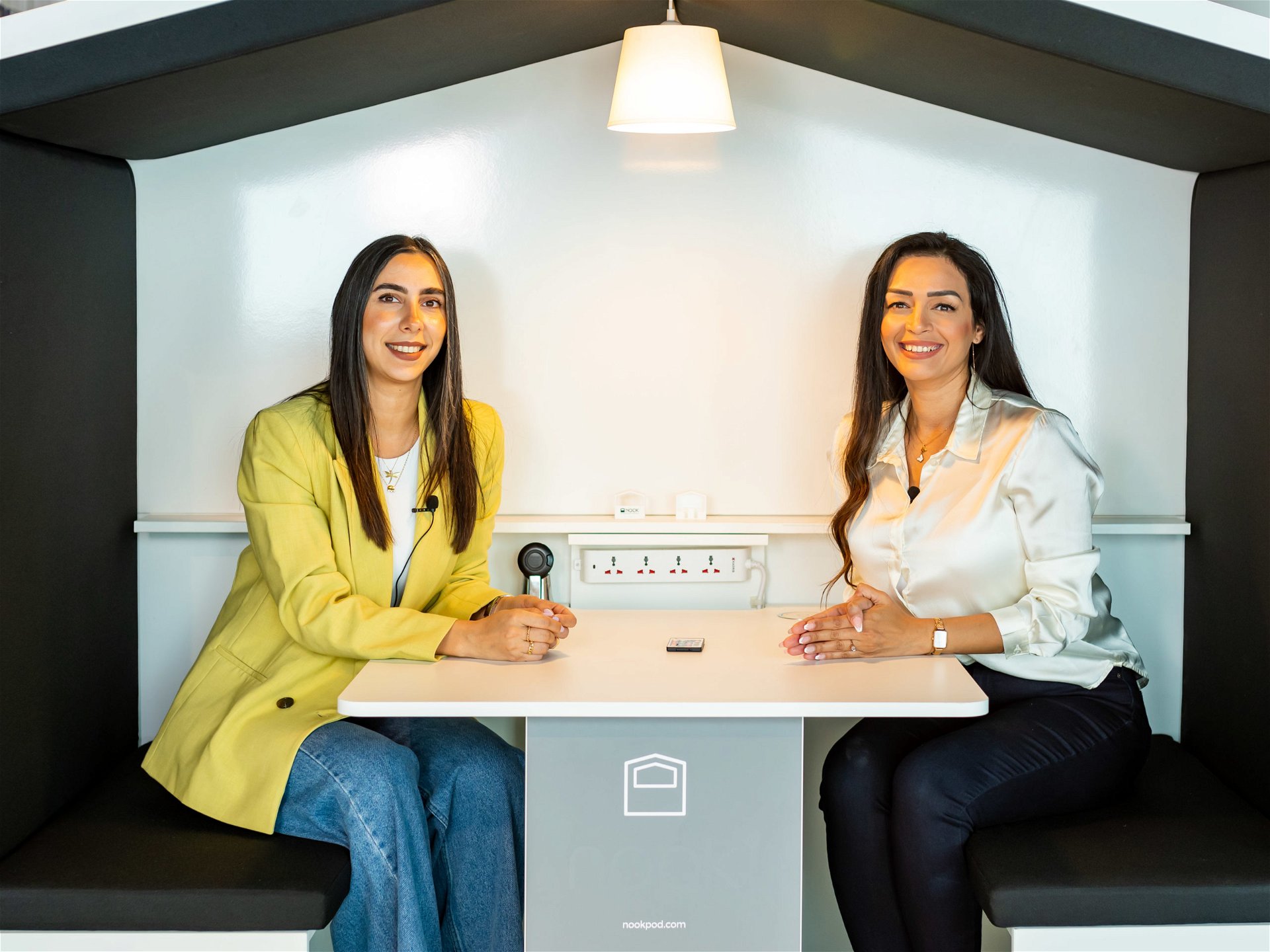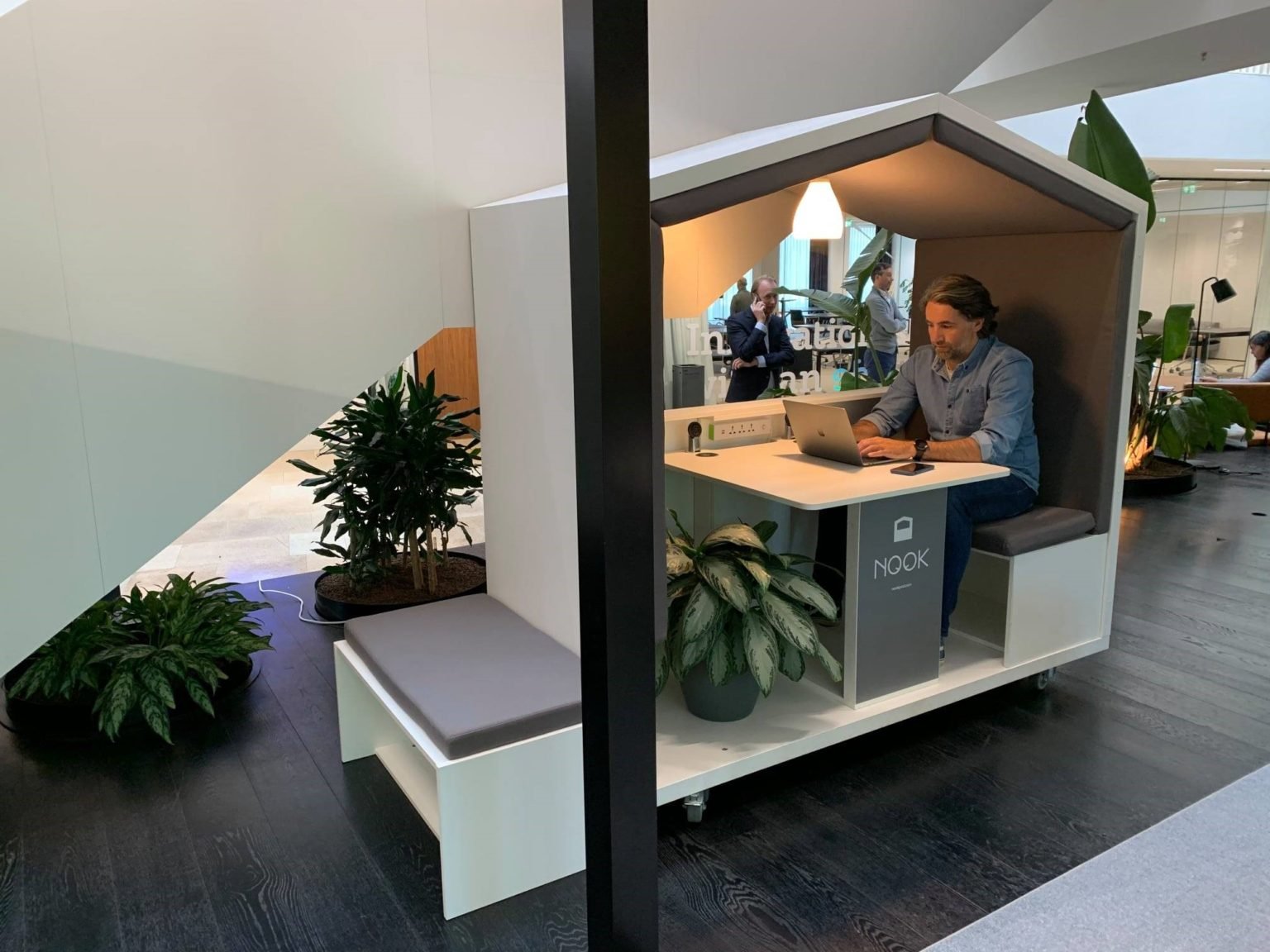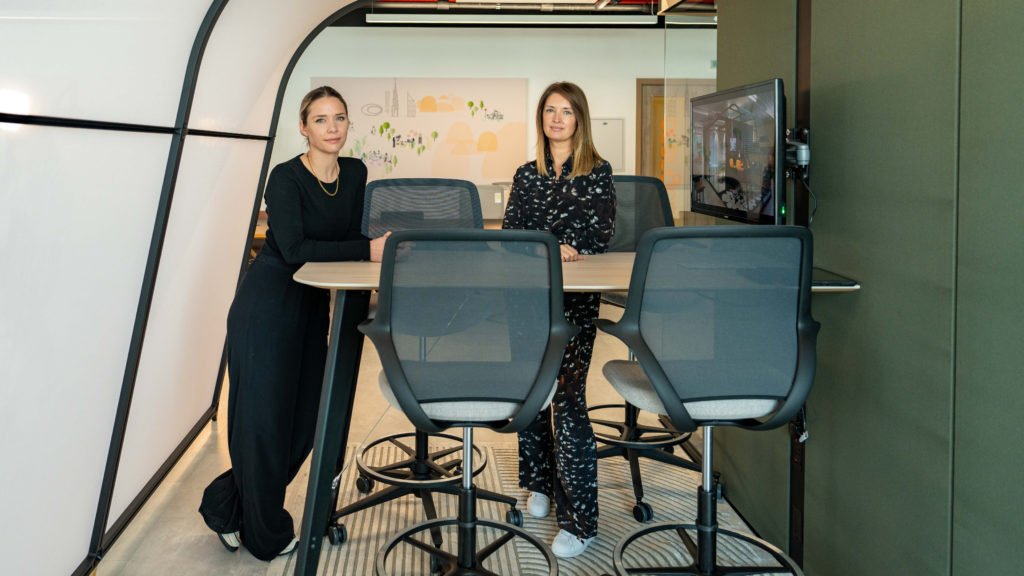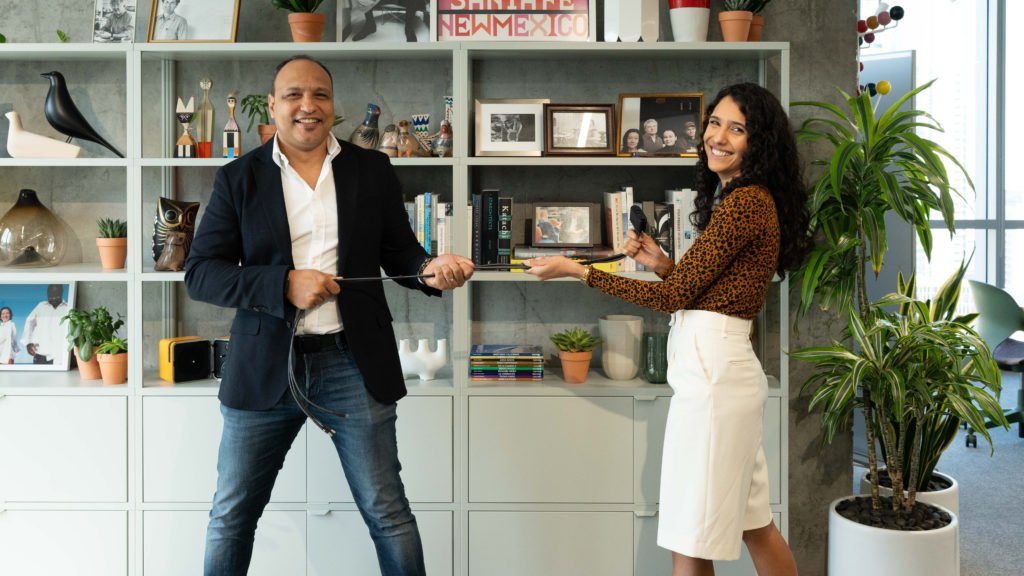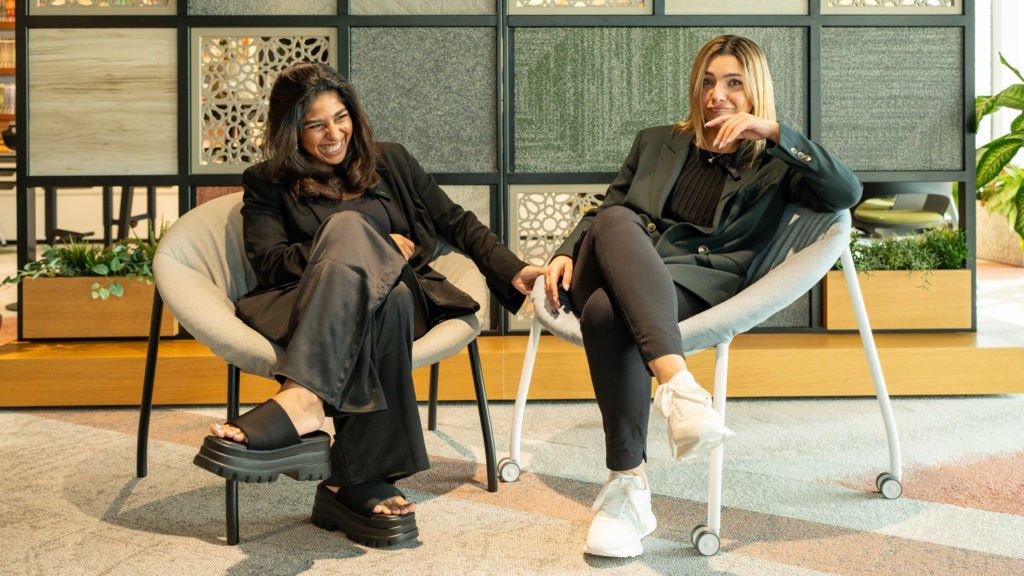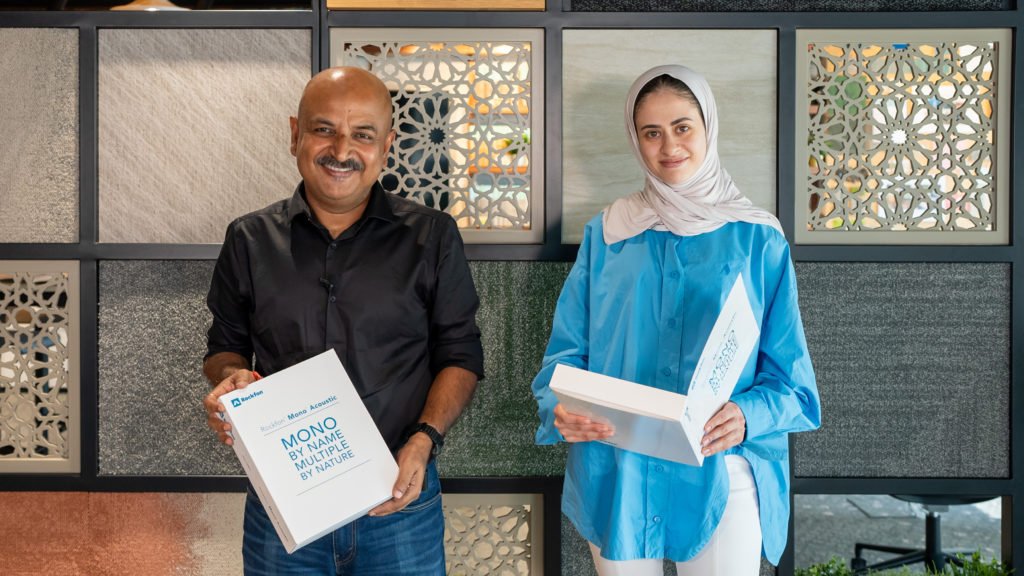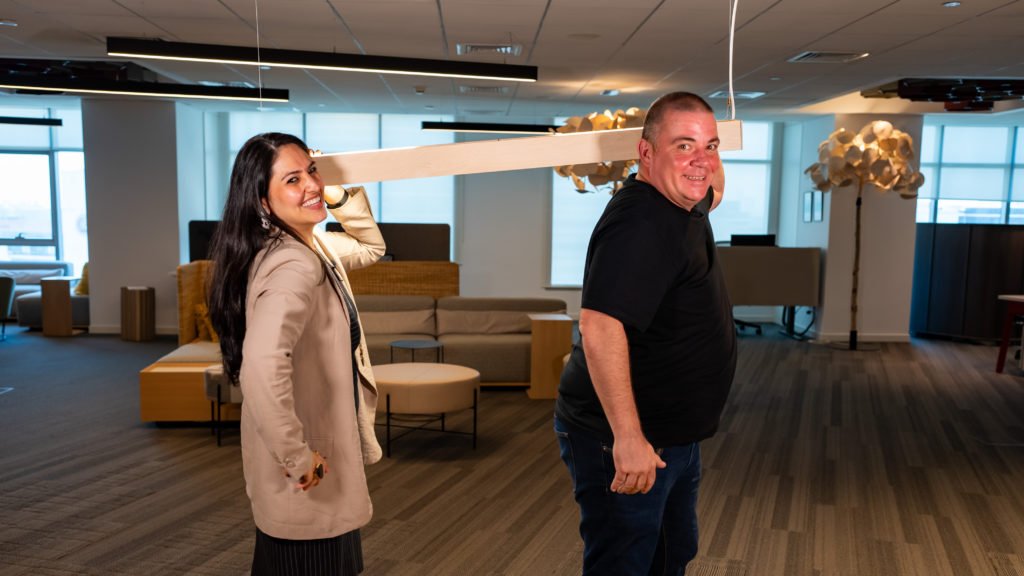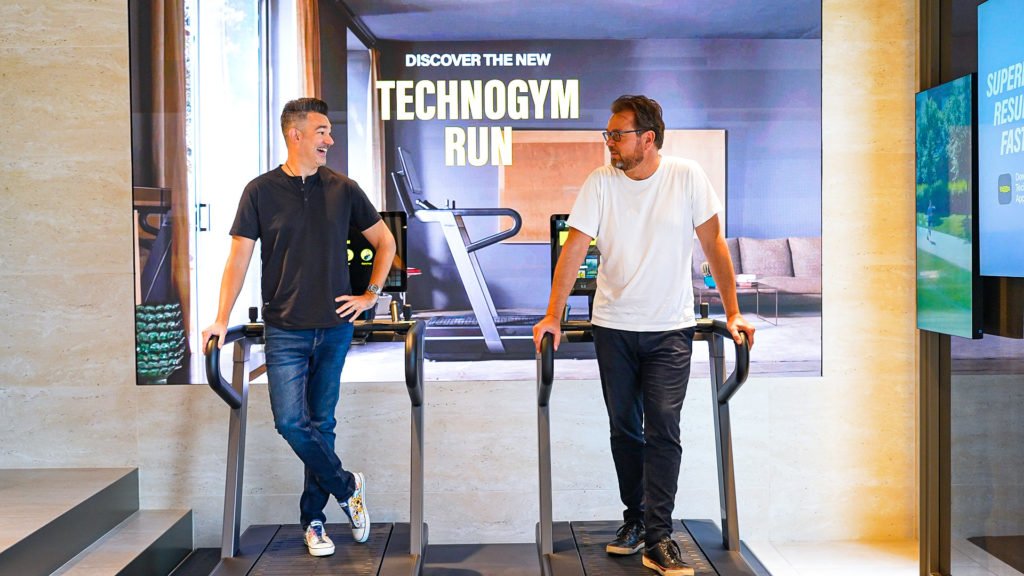The Nook Huddle pod is designed around a simple but important concept – no matter what type of office or organisation we work in, all of us need a space to focus, recharge, and connect. Nook’s products are built with personal wellbeing and flexibility in mind, and are designed to add flexibility to a space and increase the volume of productive meetings, no matter how small or large the office setup.
At the core of Nook’s design philosophy is neurodiversity and wellness, something that is explained further in the review. It started with a design by David O’Coimin who, after having worked in several larger corporations, realised that office spaces aren’t designed to provide people with a sense of calm and composure. He therefore designed products to provide a space for people to focus and recharge, while still remaining connected, in the workspace.
The Review Crew
From left to right: Reham Hussien, Senior Associate, GAJ; Christine Elias, Design Manager, Horton; Stewart Brown, Principal, Nook North America and Middle East
Neurodiversity in the Workspace
Why is the brand named Nook? “It’s simple – a nook is a small area where animals go to hide, and in all our environments, this is a need we all have sometimes,” says Stewart Brown, Principal, Nook North America and Middle East. Indeed, the Nook pod is designed with features that provide a sense of comfort and protection. The Huddle is Nook’s flagship product and, as described by Stewart, is a sanctuary space for calm focus, good conversation and improved engagement.
One of the things that make the product stand out are its credentials as a Certified Autism Resource – means it’s a dependable product for those in need of a little extra care to do their best possible.
Inclusiveness is at the core of the Nook design, which is something you find out as soon as you try the product. Stewart further explains, “The product is designed for people at the extreme end of the spectrum, but the value for general use is very high as well. Everybody’s brains are wired differently. We all need different things at different times on different days and in different circumstances. People may be hypersensitive and need something that allows for lesser stimulus around them as compared to people who are hypo sensitive and need to be more stimulated. But we all share a need for some time in the day where we can just relax and work.”
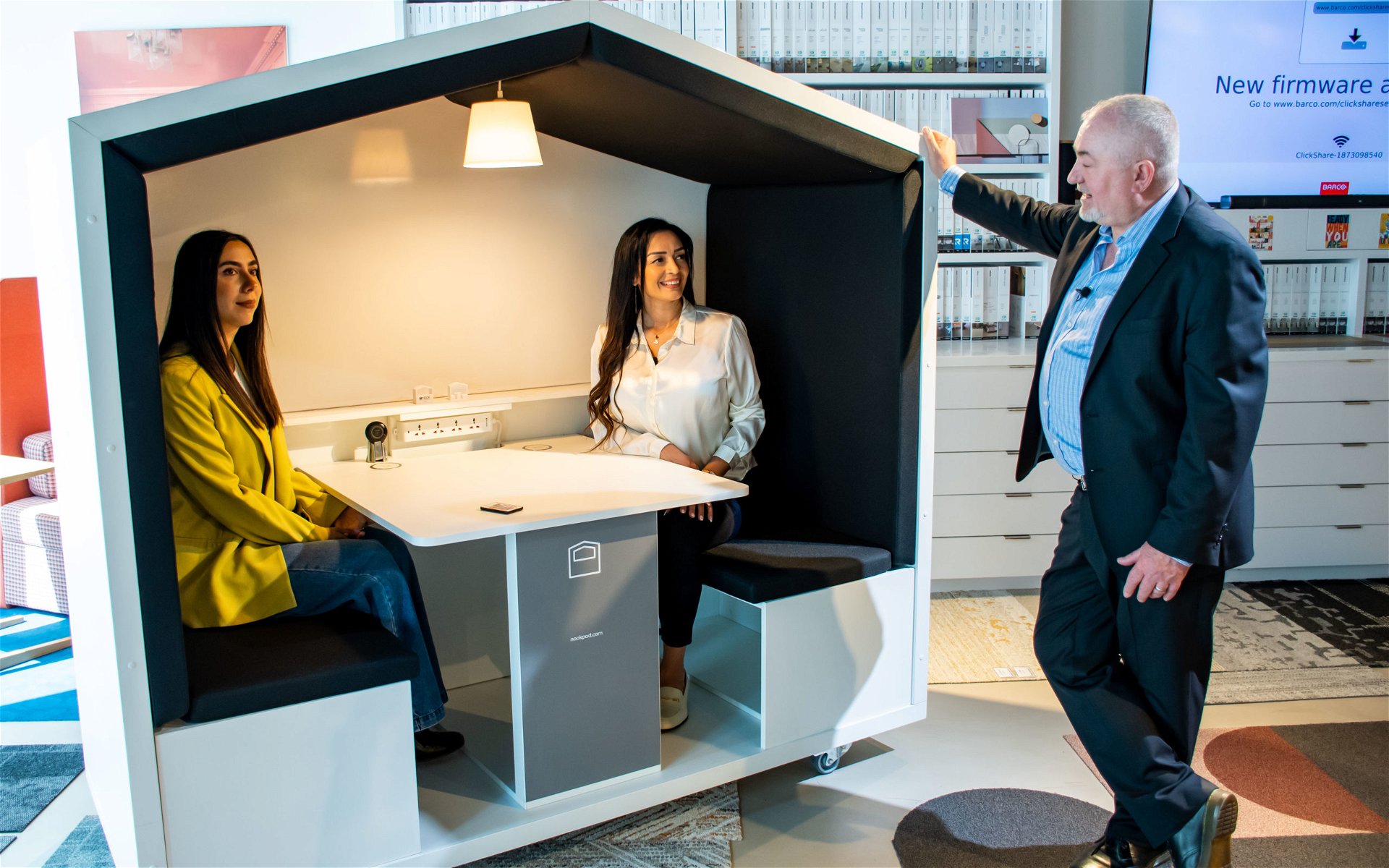
As people start coming back into the workspace after the pandemic, companies are looking for ways to support the many different activities they may want to get done. The Nook Huddle is designed to provide that relief from noise and comfort, and the adjustable lighting is something you won’t find in many pod products.
“All our Nooks are designed to be acoustically excellent, but we should also note that the ability for the user to define their own lighting in the space is a big deal,” says Stewart. “Research has proven that lighting makes a big difference when it comes to learning, especially with individuals with dyslexia or autism. So the goal here is for them to have a comfortable environment to be their best. To be truly social is to design for everybody. And by everybody, we mean even those with certain challenges that prevent them from assimilating well into the workspace and their teams.” There are configurations available in the Huddle that allow them to be ADA compliant and wheelchair friendly, further expanding the range of users who can find a great deal of value in Nook.
A key value proposition of all Nook’s products, including Huddle, is the circular design. “We believe that true sustainability is about longevity, not just of materials but also how much of it can be recycled,” says Stewart. “This is very true, as you’ll see in the makeup of the pods – the parts are designed to be replaced and repaired with ease. This allows a pod to last for years while maintaining a more than acceptable level of quality since when it was first bought. This significantly improves the total cost of ownership (TCO) as well.
Christine: I like how it’s not extremely big yet easy to move around. It’s more spacious and comfortable than it looks for sure, and multipurpose. It’s exclusive and inclusive – you can use it for people who want to be secluded for an hour or two, and also for small groups who want to have a quick conversation. You can place it anywhere as well. In terms of colours and finishes, from the outside you have plenty of options. Even on the inside, you feel like you have it as per your liking depending on what colours or branding is needed. Even the lighting is very playful while catering to special needs. It’s great that you can bring in chairs instead of bench seating, opening it up to other uses.
Rehan: I love the shape and design. It’s a nice hideaway from the stress and commotion. It can certainly support a few different work modes if needed. I like how you can customise it to make it more comfortable if needed. It’s quite cosy, and I can see it working well in spaces like universities and libraries as well. It’s movable too, which is incredibly helpful. Yes, it is meant to provide some privacy, but you can move it from one part to another if needed, like towards a window, and get some balance in the process. It’s important to be able to place it where you need, this adaptability improves the ROI of the product significantly.
A Three-Dimensional Product
The Nook Huddle is truly an agile pod, being flexible enough to quite literally fit in most tight spaces. The panels and furniture are removable and changeable, and the entire pod can be moved easily. Most of this can be done with just one person, instead of requiring a team with complicated tools, so the Huddle can be available for use where it is needed, when it is needed. The pod is also equipped with collaboration tools – whiteboards, desktop power and USB ports – for seamless brainstorming sessions.
Stewart described the Huddle as designed as truly three-dimensional, and can be used as a room divider or presentation platform on one side, whilst being used for meeting on the other side at the same time. The Huddle is designed to provide engaged seclusion but functions well as a social corner too. “It’s like the Swiss Army knife of products., providing a resource for many of the new functions needed from the shared space. Nook is truly agile – it has castors that enable it to be easily moved around to where it is needed for solo time or small team meetings.”
The pitched roof and acoustic upholstery provide a solid level of comfort and privacy without it being too secluded. There’s a neat built-in shelf that allows for organisation, and the components are modular, adding to the flexibility of the product.
Final Thoughts
The Nook Huddle certainly sets a good example of DEI focused products. Not only is it thoughtfully designed for those who need it, but provides incredible value for all types of users.
Nook brings utility to unused spaces, providing a much needed oasis for everyone in shared spaces.
Uniquely amongst the ‘Pod’ offerings, Nook provides a truly agile quiet space which remains connected to its surroundings, with the credentials as a Certified Autism Resource.
Christine: The circular design here is important to me, and I’m sure to clients as well. It’s great that it can be repaired or replaced with ease. That longevity is important to ensure it doesn’t end up as a landfill. Additionally, the certifications are useful as well. I love how its usage can be expanded from a single person to four persons at one time with ease. I also like how you can keep customising it. If you added some magnetic boards and artwork, the product would look even better!
Rehan: They’ve taken a more practical approach to sustainability with the circular design. Besides the fact that it can be repaired or upgraded, you can also change it up if you get bored with the design. The customisation options really open up several possibilities for how we can design this and have it add to the space. The Certified Autism Resource certification is important – it shows that it is a tried and tested product. In fact, if you take all the design possibilities as a whole, it’ll certainly exceed expectations.
